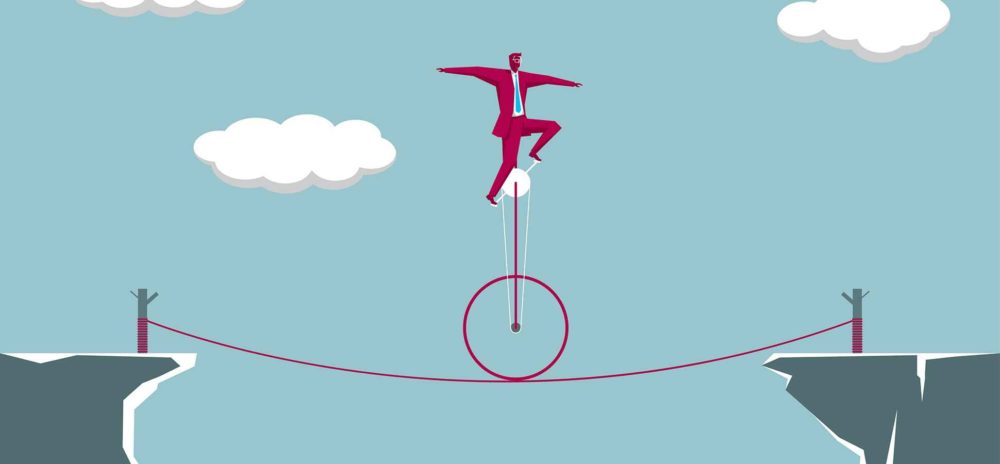People who have opposite opinions against entrepreneurship point out ten potential risks. First is management mistake that is the primary cause of business failure. Sometimes the owner of a small business lacks the leadership ability, sound judgment, and knowledge necessary to make the business work. Second is lack of business experience which indicates that most entrepreneurs tend to be beginners to be easy to make management mistakes in their own businesses. Third one is poor financial control. Effective managers realize that any successful business venture requires proper financial control. Business success also requires having a sufficient amount of capital on hand at start-up. Under-capitalization is a common cause of business failure because companies run out of capital before they are able to generate positive cash flow. Entrepreneurs tend to be overly optimistic and often misjudge the financial requirements of going into business. Fourth one is weak marketing efforts that means Continue reading
Entrepreneurship Articles
Are Entrepreneurs Made or Born?
Since the late 18th century, business has constituted a main composition of the modern society. As the success of Steve Jobs, Bill Gates and Warren Buffet, many people start their own business in chase of profit. There are entrepreneurs growing everyday while some others bankrupting. You may think that entrepreneurs are born successful, and they owned an enormous business. However, entrepreneur is not defined as the one who has made their business tremendous, but the one who starts his own company and employs himself. Therefore, anyone can become an entrepreneur if he or she starts his or her own business and works for himself or herself. There are no boundaries among people, but your working position determines whether you are an entrepreneur. Entrepreneurs are not naturally born, but naturally made. Entrepreneurship is actually not a destiny, but a qualification. It is the qualities that make entrepreneurs successful. Moreover, the qualities Continue reading
10 Common Characteristics of Successful Entrepreneurs
Entrepreneurship is itself a process through which the entrepreneur allocate the resources available to the business in a way or in other words in a systematic manner that the entrepreneur can meet the requisites of the business and achieve the objectives of the business as well as of his own. Now a days businesses are being done on large scale or more businesses are being run in one organization therefore, the executive management or the entrepreneurs has to adopt the ways and system through which they can not even secure their time but to save their resources from drain. Entrepreneurship is the process of innovation that reallocates resources to new opportunities, often creating new opportunities through unusual combination of resources and skills of risk taking. The entrepreneurs some time has to face the problems because they prepare their plans personally and create innovations and believe that they are doing the Continue reading
Four Types of Entrepreneurs According to Clarence Danhof
An interesting distinction about types of entrepreneurs is the one proposed by the author Clarence Danhof, which classified entrepreneurs into four groups based on economic development. He based his classification on his study of American agriculture, and he observed that entrepreneurs could be classified depending upon the level of willingness to create innovative ideas; so there can be the following types of entrepreneurs: Innovative: an aggressive assemblage and synthesis of information and the analysis of results deriving from new combination of factors of production characterize this type of entrepreneurship. These entrepreneurs have the ability to think newer, better and more economical ideas of business organization and management. They are characterized by the smell of innovativeness, and they are aggressive in experimentation and in putting attractive possibilities into practice. An innovative entrepreneur sees the opportunity for introducing a new technology, a new product or a new market. Schumpeter’s entrepreneur was of Continue reading
Case Study on Entrepreneurship: Walt Disney
Animation is the allusion of movement through the persistence of vision. It dates back to as early as 1650 in Paleolithic cave painting, where animals were often drawn with multiple sets of overlapping legs. Although some argue that this could simply represent the artists’ changing their minds about leg position, most perceive these paintings as early attempts to portray motion. The zoetrope, a cylinder with vertical slits in the sides, is another example of early animation, as the inner surface of the cylinder has a band of sequenced pictures that produce the illusion of motion as the user looks at the pictures through the slits as it spins. Since cave paintings and the zoetrope, other forms of animation have been established, including stop motion, 3D animation, motion capture, rotoscope, film, etc. Numerous people have contributed to the world of animation and amongst those is Walt Disney. Just to name a Continue reading
Major Drawbacks of Entrepreneurship
Entrepreneurs are persons who are creative and imaginative in finding ways and add them to their own wealth, power and prestige. Entrepreneurs innovate and introduce new quality of good which consumers are not familiar yet. Besides, they often launch new method of production and new market which have not been tested and existed before yet. Moreover, they also bring new source of supply of raw material or half manufactured goods. Likewise, they create monopoly position which is the carrying out of the new organisation of any industry. It is important to differentiate between two primary types of entrepreneurs to understand how economic development occurs. ‘The initiation entrepreneur” is responsible for unprecedented economic growth during 19th and 20th centuries; creating new products, new productive technologies or procedures which has not existed before. Whereas ‘the imitative entrepreneur’ is for economic advancement in developing countries today, where there is a more widespread and Continue reading





